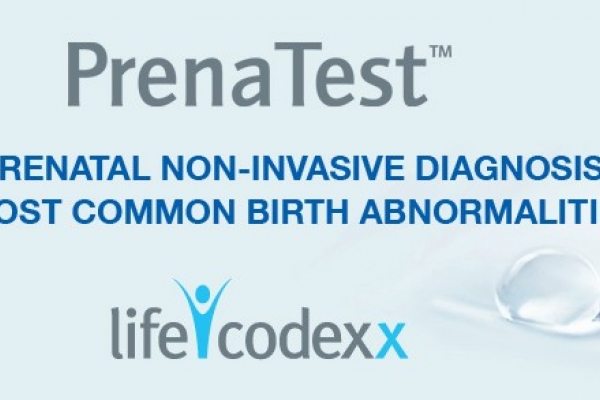Early screening - from the 9th gestational week
01/04/2020
One of the activities performed by the St. Dimitar Medical Center in the field of obstetrics and gynecology is the diagnostic activity and, in particular, the diagnosis and tracing of the fetus in pregnant women. One of the recommended tests is early screening for Down, Pattau and Edwards syndromes. Rarely occurring, these anomalies in the development of the emyo are dangerous genomic mutations that lead to mental retardation and a number of health problems. St. Dimitar's MC specialists recommend PrenaTest © early screening (since the 9th week of gestation) because it is a DNA test with a high degree of accuracy. Here's some more information on the subject. What are the trizomes and what are the reasons for their development? Genetic material in all cells is organized into chromosomes. Two of them (sex chromosomes X and Y) define sex, and the rest (chromosomes 1 to 22) are called "autosomes". In the first stage, before each cell division, the chromosomes are doubled and then distributed equally between the two daughter cells. There may be errors in the process of this allocation. If this happens during the development of the egg or sperm, and the baby is conceived by such altered cells, the emyo will carry modified genetic information. In the greater part of chromosomal imbalances such as these pregnancies do not occur in the presence of such primary gametes or the result is an early miscarriage. If three chromosomes are present in the child's cells, instead of two (as is customary), this is called "trisomy". A very small part of the trisomies are compatible with life. The most common and most commonly known chromosomal imbalance is trisomy 21, in which there are three instead of two 21 chromosomes in the cells. The disease is known as Down Syndrome. Trisomy 18, also known as Edwards' Symrome, is a much less common phenomenon, and trisomy 13 - Patua syndrome is a case that occurs in even fewer cases. The expression of these trisomias, in the form of manifestations of the disease, may be very different in the affected children. You can count on MC St. Dimitar for advice or advice about the risks of your pregnancy, and what it means for you and your baby even before birth. What types of diagnostics of these genetic anomalies exist and how are they performed? In general, traditional studies during pregnancy are two types - non-invasive and invasive. Non-invasive studies include ultrasound examinations and blood tests, known as BHC. They do not perform manipulations on the pregnant woman's body (except for blood), which makes them more gentle and without the risk of losing the fetus. Nervous translucency measurement, for example, is one of the most commonly used ultrasound examinations of the fetus, which takes place during the first trimester (12th to 14th gestational week). These preliminary non-invasive methods can be used to assess your personal risk of trisomy 13, 18 or 21 in the fetus but do not give a definitive diagnosis. Invasive methods are manipulation on the future mother's body. An example of such a method is amniocentesis (or placental puncture). These methods allow cells from the unborn baby to be taken and chromosomal analysis performed. The number, shape and structure of the chromosomes are analyzed, as a result of which an anomaly can be demonstrated or rejected, for example, trisomy 13, 18 or 21. In these methods, however, the risk of miscarriage is approximately 1.5%. PrenaTest, as a new non-invasive method, offers a reliable opportunity to detect the most common forms of trisomy - 13, 18 and 21, standard trisomy in the fetus. For the purpose of the study, venous blood is taken from a pregnant woman, and this procedure does not pose a risk for pregnancy. As of July 2013, a new feature of PrenaTest © is the baby's sex determination.

